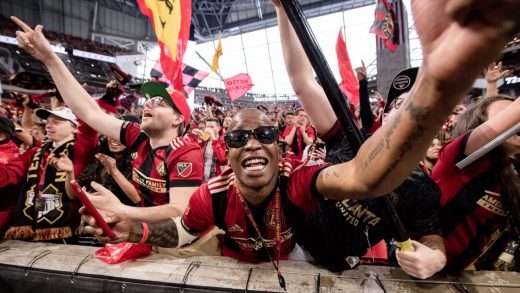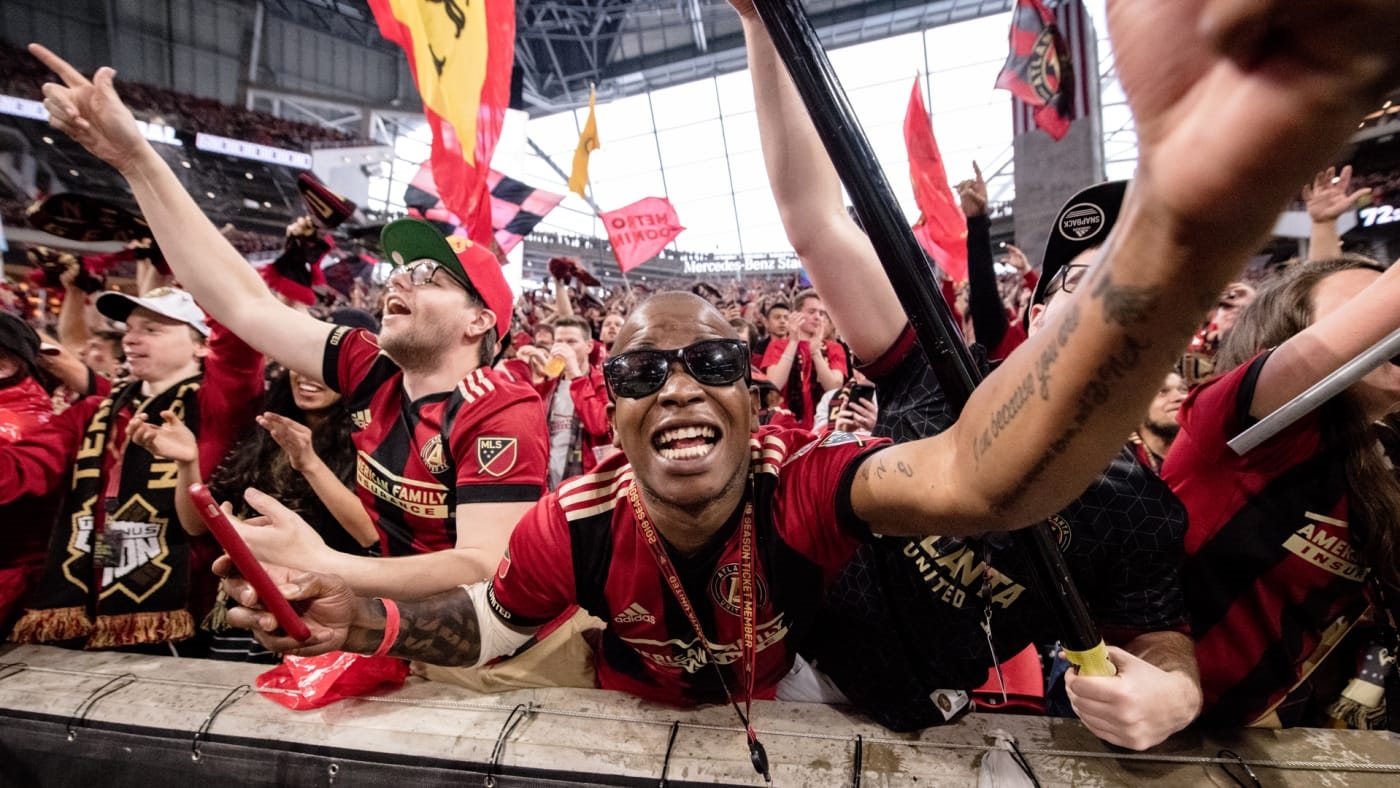How Atlanta United’s innovative recruiting changed Major League Soccer
Back in March, Atlanta United set an attendance record. Some 72,000 soccer fans had come to cheer on their team face-off against their Major League Soccer rivals, D.C. United. Atlanta United won 3-1 and, as the saying goes, the crowd went wild.
The team was only founded in 2014, part of a wave of M.L.S. expansion teams that are helping soccer finally make inroads into the U.S. Building a team from the ground up is difficult, but Atlanta went about it in such a way that they ended up changing how the game is played in the U.S. And while this is a story about sports, the lessons could apply to any industry.
When it comes to recruiting players to play soccer in the United States, the rules in Major League Soccer are a bit tricky. (Sports Illustrated put together a “helpful” flowchart that illuminates the complexity of the issue without making it comprehensible in any way.) The recruiting rulebook is so byzantine that it can actually hinder recruitment, which is not particularly useful for a still-growing league.
“The way it works in M.L.S. is you have a salary cap and three designated players [DPs] that you can pay anything over and above the cap,” explains Darren Eales, President of Atlanta United FC. Traditionally those DPs are very well-paid, with teams throwing millions at players like British football legend and trophy husband David Beckham, who came over from Europe to play for the L.A. Galaxy. In fact, as more European pros at the tail end of their careers follow in Beckham’s footsteps, making their way to the U.S., in the hopes of one last big pay-out before retirement, the Designated Players Rule, has become known as the “Beckham Rule.” Atlanta United, though, wanted something different from their DPs—and that decision radically changed recruiting for M.L.S.
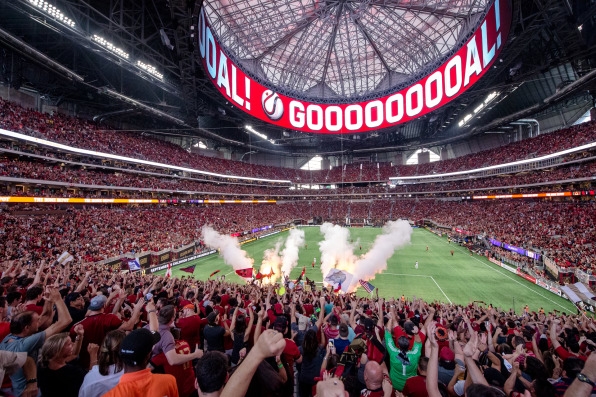
When team owner (and Home Depot founder) Arthur Blank hired Eales away from the English Premier League team Tottenham Hotspur Football Club (THFC), they both knew they wanted a young, dynamic, fast, and attacking team. They also knew they probably wouldn’t be able to get that from older players, even if they were European stars. Rather than using the money set aside to woo star DPs, they decided to bring in younger, lesser-known talent instead.
“We felt we could get better players, if we got younger players building up their career rather than taking a player on his last contract that perhaps is already halfway on the beach,” says Eales.
However, money wasn’t the only thing Atlanta United had to offer. The U.S. soccer program is still young and while footie-playing kids around the world don’t necessarily grow up dreaming of playing in M.L.S., it’s much easier to get in on the ground floor of one of the 23 professional clubs in the U.S. than it is to break into England’s Premier League. Even if an 18-year-old Argentine upstart was able to sign on with a team like Crystal Palace or Stoke Newington, there’s a good chance he (yes, it is all “he” in this world) would end up on the bench for most of the season, in favor of more seasoned players.
Eales knew that one thing the M.L.S. could offer a young player is opportunity. “I realized we could sell M.L.S. as this growing league where if you are a younger player, you could come develop your game, and then move on,” says Eales.
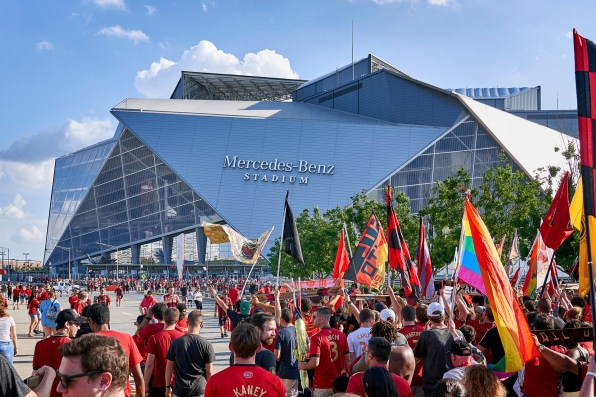
The idea was that if it was too big a jump for a player to go straight to a Champions League team in Europe, they could “come to major league soccer and then if you have a good couple or three, four years, move on into a top European club.”
It works something like this: find rising, but unproven talent, pay the transfer fees from whatever team they are playing for, bring them to Atlanta United, score a ton of goals and hone their craft on the field. Ideally, after a few years in Atlanta, a European club with a thick wallet would come calling. They would pay a hefty transfer to Atlanta United, and the player would move on to an even better team.
For example, in 2016, Atlanta brought on Miguel Almiron, a Paraguayan attacking midfielder. He has been busily making a lot of goals and assists during his time with Atlanta United and European club teams are starting to notice. Atlanta, meanwhile, is more than happy for him to be wooed by those teams.
Of course, as anyone who has tried to recruit talent knows, it’s best to have a multi-layered approach. Luckily, Atlanta United has Tata Martino, too. Gerardo “Tata” Martino is a football coaching legend—he led the Argentina National Team, Paraguay National Team, and La Liga’s FC Barcelona during his prestigious 20-year coaching career. He came to Atlanta in 2016, signing on as the team’s first head coach. While playing time for a rising soccer star is important, playing time under Martino’s guidance is potentially career-making.
Because of Martino’s coaching legacy, Atlanta decided to focus its money on luring in young players playing in Argentinian or Paraguayan club teams, which put Atlanta in the unique M.L.S. position of directly competing for talent with European clubs. It was clear that approach was working when they managed to convince 18-year old Ezequiel Barco, one of the rising stars of Argentina’s soccer program, to sign with M.L.S., even though European suitors were reportedly angling for him, too. Barco’s transfer to Atlanta United made it clear that the club was planning on vying for top talent with the European teams and that players like Barco were listening. (His $15 million transfer fee—a league record—undoubtedly helped seal the deal, too.)
Barco isn’t the only serious prospect now playing at Atlanta United. “We were able to attract Miguel Almiron, Joseph Martinez, Tito Villalba, by saying to them, look, guys, come to us, we’ll put you in the shop window,” says Eales. “We’ve got a coach in Tata Martino, who’s probably the top coaches in the world. We’ve got a fan base where you can be playing in front of 70,000. We’ve got a brand new training ground.”
Major League Soccer teams are a business, though, and there is solid financial reasoning behind Atlanta United’s strategy, too. [Trigger warning: math!]
“If player X is a Premier League player who’s coming to the end of his career and you pay him $6 million a year for three years, that’s $18 million U.S. dollars that you spend after three years and you get nothing back. He’s going to go,” explains Eales. “If instead you sign player A from South America for $10 million, pay-in $2 million a year for three years, your investment is still $16 million, but at the end of that three years you might be able to move him on. Even if you move him on for the same price you’ve paid, you’ve got $10 million back.”
To woo Almiron to the U.S., Atlanta paid his Paraguayan Club, Lanus, around $8 million, but Atlanta expects to earn back every penny if and when Almiron (currently valued at around €15-20 million) moves to a European team. “The payoff for us is it then makes it easier for us to go and attract that next young star, because we’ve proved the concept and now we can attract even better talent,” says Eales. “So, it’s a virtual circle. We get better talent to the league, it makes our team stronger and the reality is we can sort of become part of that global game of football.”
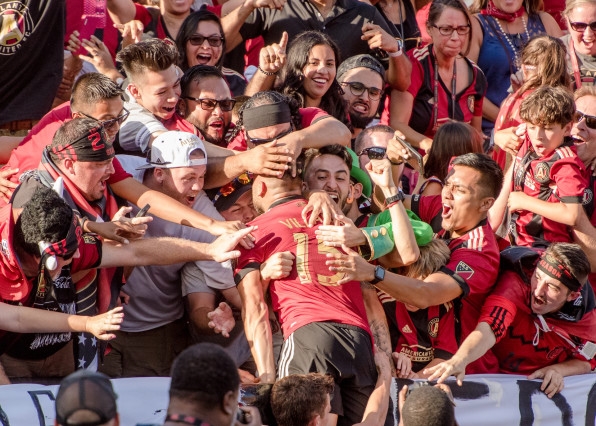
Of course, this sort of football transfer bingo involves a great deal of risk. Barco could be injured, Almiron could fizzle, there are a lot of possible outcomes that could mean Atlanta United never gets its money back. As SBNation points out, “your favorite M.L.S. club isn’t spending tens of millions less than Atlanta United because it doesn’t have any money. It’s doing so because it doesn’t want to take any kind of risk.”
For now, Atlanta is happy to take that risk, though, not only because they can show off incredible talent to their fans, but because they are proving that spending on players can potentially lead to a large profit in the future. While that spend may be the normal course of business in other industries, no one had applied it to Major League Soccer before. That’s changing now, though, as more teams borrow a page from Blank’s and his team’s splashy recruitment playbook. “Oh, they’re certainly doing it now,” says Eales, with a laugh.
He is glad to see it, too. “It helps the whole league,” he says. “It’s been interesting to see the level of sort of young talent that’s coming in.”
Fast Company , Read Full Story
(16)

